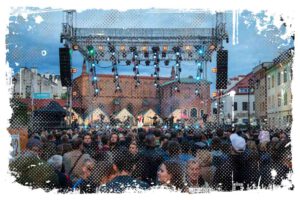As one of Poland’s most historically significant cities, Krakow has a rich cultural heritage that includes playing the role of the country’s capital and the residence of kings for centuries. Krakow is also known for many cultural institutions, including the Jagiellonian University and numerous libraries and museums. Krakow has its official symbols, such as the coat of arms, flag, ensign, seal and colors. They all play a prominent role in the city’s identity. In this article, we will delve into them one by one.

Krakow’s Coat of Arms
The coat of arms, as a symbol, has its roots in medieval knightly traditions, where identification signs were placed on banners and shields as a way to gain recognition on the battlefield. Over time, it was adopted in other areas of society, including cities.
The earliest reference to the coat of arms of Krakow being used outside of a seal is in the description of the Hungarian King’s visit to the city in 1370. The King came to Krakow after the death of King Casimir the Great to crown himself the next ruler of Wawel Castle.
One of the oldest existing monuments bearing the coat of arms is a bell in St. Mary’s Church, which was founded by King Wladyslaw Jagiello. The coat of arms remains the city’s most prominent symbol to this day.
↳ Make sure to read my guide to the most amazing places to stay in Kraków:
How to Find Best Place to Stay in Krakow Old Town – Your Guide
Coats of arms are not only present on various written monuments and prints, but also decorate various buildings and their interiors, as well as other artifacts, from bells to reliquaries, banners, cribs, and even everyday items like buttons, jugs, and padlocks.
According the official city website, the development of coats of arms is a long process. Before the coat of arms appeared, the seals were used for authenticating city documents. It was a similar process in Krakow, where the coat of arms was introduced after the seals.
Modern Coat of Arms of Krakow
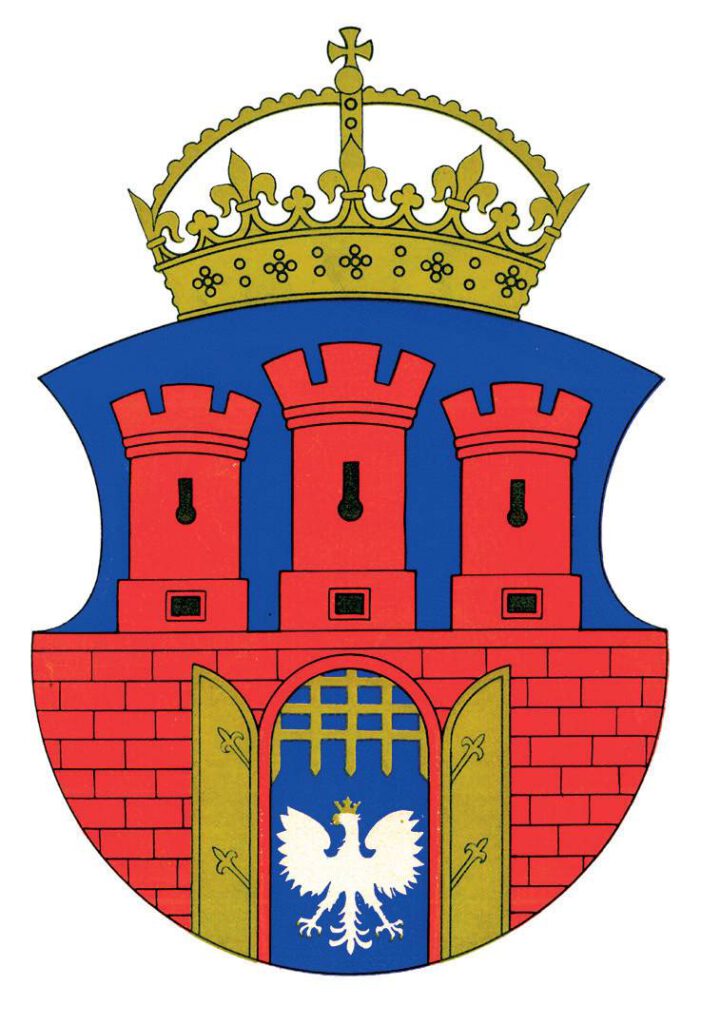
The coat of arms of Krakow features a blue field depicting a red brick wall with three towers. Each tower has a crenellation of three openings on top, black shoots and windows. The middle tower is taller and wider than the others.
On the wall, there is a gate with golden open doubles, lily-shaped fittings, and a raised golden harrow. In the opening of the gate, there is a crowned white eagle with a golden beak and talons. The shield of the coat of arms, shaped in the traditional Renaissance style, is surmounted by a crown with lily-shaped blossoms, capped by a cabochon with a ball and cross in the finial. You can see it below.
Seals of the city
The modern Krakow seal has a circular shape, with the city’s coat of arms displayed in the center and an inscription around the edge, reading: “CAPITAL ROYAL CITY OF KRAKOW” (In Polish it states: STOŁECZNE KRÓLEWSKIE MIASTO KRAKÓW)
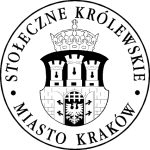
In the history of Krakow, the city’s seal is the oldest municipal symbol, which later led to the creation of another symbol, the coat of arms of Krakow. The creation of the seal preceded that of the coat of arms, rather than the other way around.
The earliest seal of Krakow was created in the 1380s. It depicted a three-towered structure with figures of Krakow’s Cathedral’s patron saints, St. Wenceslas and St. Stanislaus. Elements that would later form the coat of arms were: a three-towered building, an eagle, and a crown. But it took another three centuries for the coat of arms to take its current form.
Seal symbolism has remained unchanged for centuries and still holds true today, although electronic communication has introduced a new dimension to this concept. This symbolism is particularly prevalent in municipal seals, which serve cities and their authorities.
There are a 3 types of such seals:
- Seals of the city that refer to the entire urban community as expressed by the inscription in the rim. In its simplest form, it is the phrase “City of Krakow”, and these basic seals of the city are a symbol of the entire urban community.
- Seals of the highest city authorities, which refer to the leading city bodies (such as the mayor, city council, and president). The decisive factor in these seals is the content of the inscription on the rim, which indicates under whose authority a given seal falls, and what or whom it symbolically represents. In Krakow’s case, the simplest inscriptions on these seals include “City Council of Krakow” and “President of the City of Krakow”, These seals are also symbols of the municipal authorities and will be discussed separately.
- Other city seals, referring to lower authorities, offices, institutions, and city positions. These seals do not fall under the category of symbols of the main authority, and thus are not the focus of this discussion.
Flag of the City
The flag of Krakow has a rectangular shape and consists of two horizontal stripes of equal width, the top one being white and the lower one blue. The proportion of the flag is 5:8.
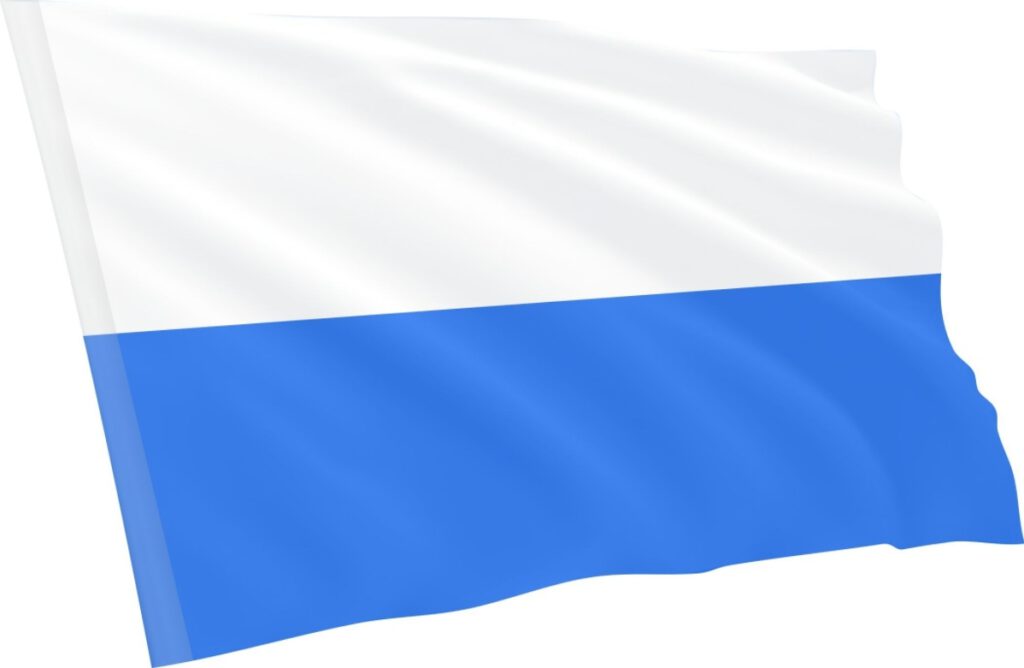
The flag is one of the five official symbols of the city, along with the coat of arms, seal, colors, and ensign, that make up a set of Krakow’s most important signs. All of these symbols are equivalent and interconnected. The flag represents the city’s white and blue colors and is a complement to the flag, which is exclusively used by the city authorities.
Meanwhile, the flag is used universally and can be used by local authorities and institutions in the city, as well as by residents and private individuals. Overall, the flag is an important symbol of the city, and it represents the identity and heritage of Krakow.
It is not exactly clear when the city flag, in its current form, first appeared in Krakow. Historically, the city colors were the primary symbol, as previously mentioned. They were used on pennants, sashes, ribbons, and bows, and it is likely that this led to the transition to the flag as we know it today.
It is possible that this transition occurred during the period of the Free City of Krakow (1815–1846) or possibly at a later date. However, it is known that the period of Galician autonomy (beginning in 1866) was a significant time for the development of the flag.
Please read my other article about the flag of Poland, from which you will find out why there are two types of flag and why there is an eagle on one of them.
Krakow’s Official Colors
Krakow is distinguished by the colors of white and blue. These have become a symbol of the city and have a wide range of applications, including the city’s flag. However, it’s worth noting that the colors themselves hold more significance than the symbols that feature them.
It’s not entirely clear how these colors came to represent Krakow, as records from that time have not been well-preserved. But it was reported in a resolution from the city council in 1542 that city guards and bollards were wearing these colors.
The Ensign of The City
The ensign of Krakow features a white diagonal cross on a blue background, with the city’s coat of arms placed at the intersection of the cross’s arms. The ratio of the width to the length of the mantle is 5:8.
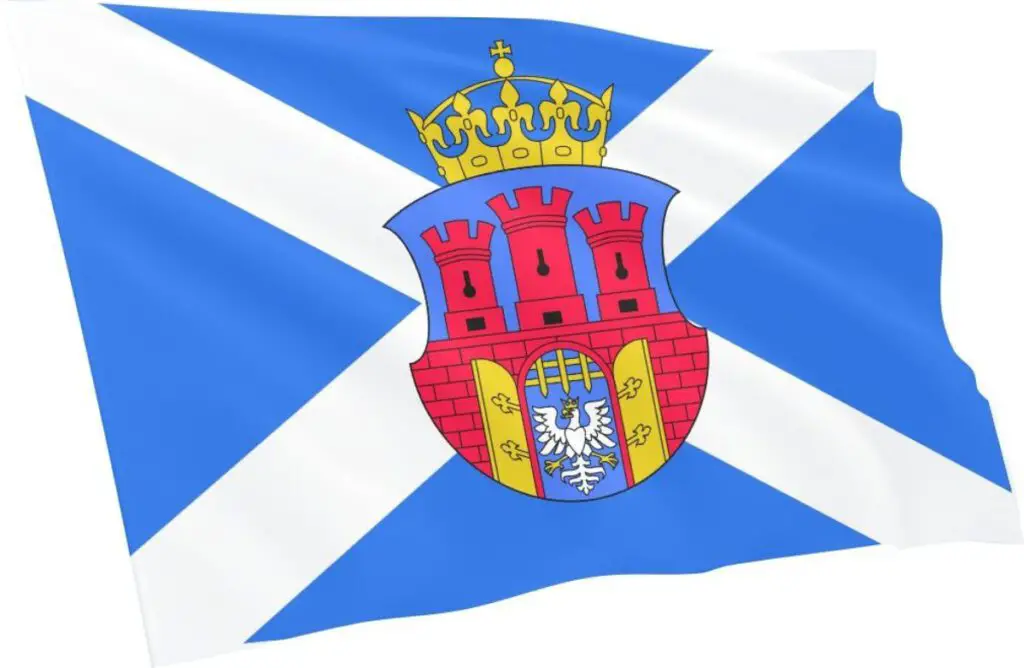
The Krakow ensign has its roots in knightly and battle traditions. Today, this symbol of the city falls into the category of banners. The city has its own symbols, such as its coat of arms and colors, and the most honorable way to present them is through a ensign featuring the city’s colors with its coat of arms on the mantle, thus incorporating other symbols as well.
The Krakow ensign, which was a well-known symbol from the city’s history, had been absent from the city’s customs for a long time. The ensign was replaced by a flag in the colors of the city. The ensign was not restored until 2002, when the city’s symbolic signs were organized and a set of the most important official symbols was created.
More than a quarter of a century has passed since then, but it’s clear that restoring the city’s ensign was a great decision.
Bibliography
- https://www.poczetkrakowski.pl/tomy/show_article,symbole-miasta-4826.html


